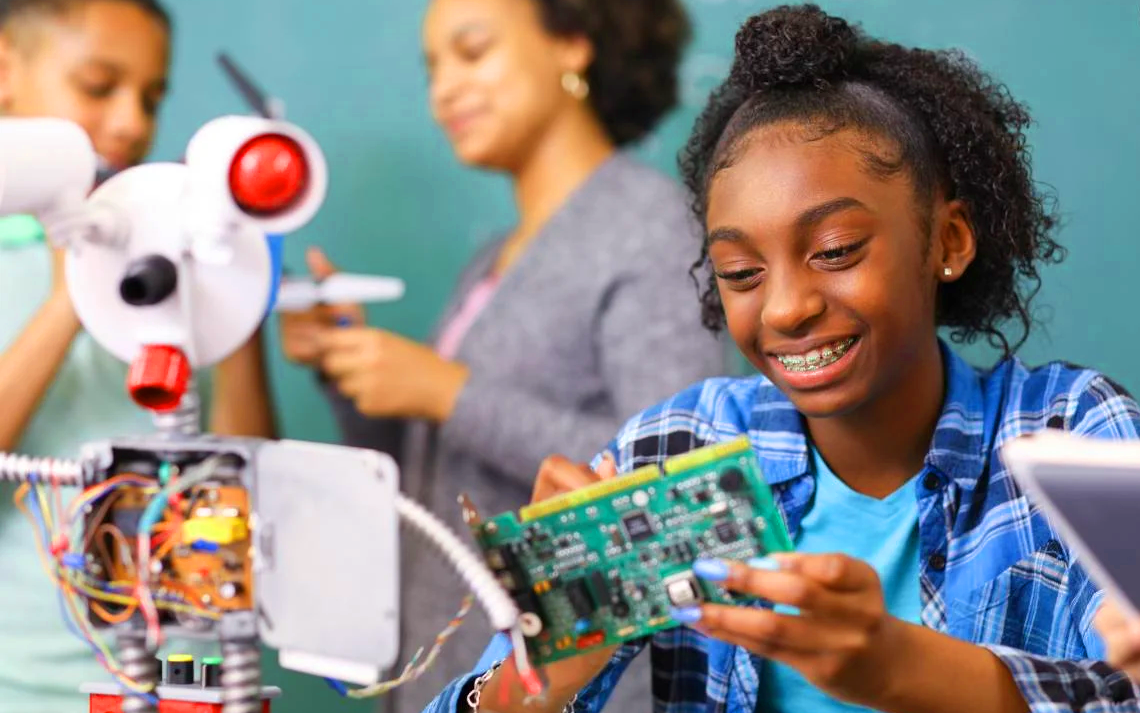Build the Future: Exploring Robotics Engineering

Robotics engineering is a field that blends mechanical, electrical, and computer engineering to design and build robots that can move, think, and even sense the world around them.
The Dive
Imagine building a robot from scratch. You’d need to think like an engineer, a coder, a designer, and a problem-solver all at once. That’s what robotics engineering is all about. It takes knowledge from mechanical, electrical, and computer engineering and mixes it with a whole lot of creativity. Engineers start with an idea: a robot that can help doctors, clean up trash, or even explore Mars. Then comes the design—figuring out how the robot will move, sense its surroundings, and understand commands.
Robots aren’t just metal and wires. They’re systems with different parts that need to work together. First, there’s the operator interface, how humans tell robots what to do. This could be buttons, touchscreens, or even voice commands. Then there’s mobility, which is all about how the robot moves. Some roll, some walk, and others fly like drones. Under the hood, you’ll find the robot’s structure (motors, gears, and arms that make it move and lift). Programming gives the robot its 'brain,' telling it how to act based on input from its sensors, which help it see, feel, or hear what’s around it.
Building robots teaches you more than just how machines work. It’s a hands-on way to learn science, math, and engineering by doing. When you design a robot or troubleshoot a tricky bug in your code, you're learning how to break down big problems, test ideas, and keep going even when things don’t work the first time. These are skills you’ll use in any career and in life.
And speaking of careers, robotics engineers are shaping the future in every direction. They design everything from factory robots to surgical tools. Some focus on writing code, while others build the robot’s body or test its performance. Robotics technicians make sure machines work the way they should. Even in jobs like farming or space exploration, robots are becoming essential. The world of robotics is full of opportunities, whether you want to build, code, repair, or operate these incredible machines.
The best part? You don’t have to wait for college to start learning robotics. From beginner kits to school clubs, there are tons of ways to explore how robots work right now. Every challenge you face, like programming a robot to avoid obstacles or designing one that can pick something up, is a chance to get smarter, stronger, and more creative. Because the future isn’t just built by engineers. It’s built by kids like you, who are brave enough to tinker, test, and imagine what’s next.
Why It Matters
Robotics engineering is where future-ready skills come to life. It teaches us how to build, think critically, and solve problems using real-world tools. As robots become more common in everything from healthcare to space missions, people who understand how they work will be the ones leading the next wave of innovation. Exploring robotics now opens the door to limitless possibilities tomorrow.
?
How do robots use sensors to 'see' or 'feel' their surroundings?
What are some everyday problems you could solve with a robot?
Why do robots need both hardware and software to function?
How do engineers test robots before using them in real life?
What’s the difference between a robotics engineer and a robotics technician?
What’s your dream robot—what would it do and how would it move?
How might robotics change the future of jobs like farming or medicine?
What makes robotics a fun way to learn STEM skills?
Dig Deeper
This episode looks at robots and the engineering principles of robots. Learn how robots use sensors to interpret their environment, how actuators and effectors allow a robot to manipulate the objects around it to accomplish a task, and how computers coordinate the efforts of the two.
Meet some real-life robots, and find out what robots really are, and what they do for us every day!
Related

Think Like a Computer: Cracking the Code of Algorithms & Computational Thinking
An algorithm is just a fancy word for a list of directions. But when used with computational thinking, it becomes a superpower for solving big, messy problems—just like a coder, scientist, or game designer.

What Is Buoyancy?
Why do ships float, submarines dive, and balloons rise? It all comes down to buoyancy—the force that pushes up.

Design Like an Engineer: Building Bridges and Towers That Last
Engineers are creative problem-solvers who use science and math to build our world. From bridges that hold trains to towers that scrape the sky, their designs balance strength, stability, and style—all under tight constraints.
Further Reading
Stay curious!

